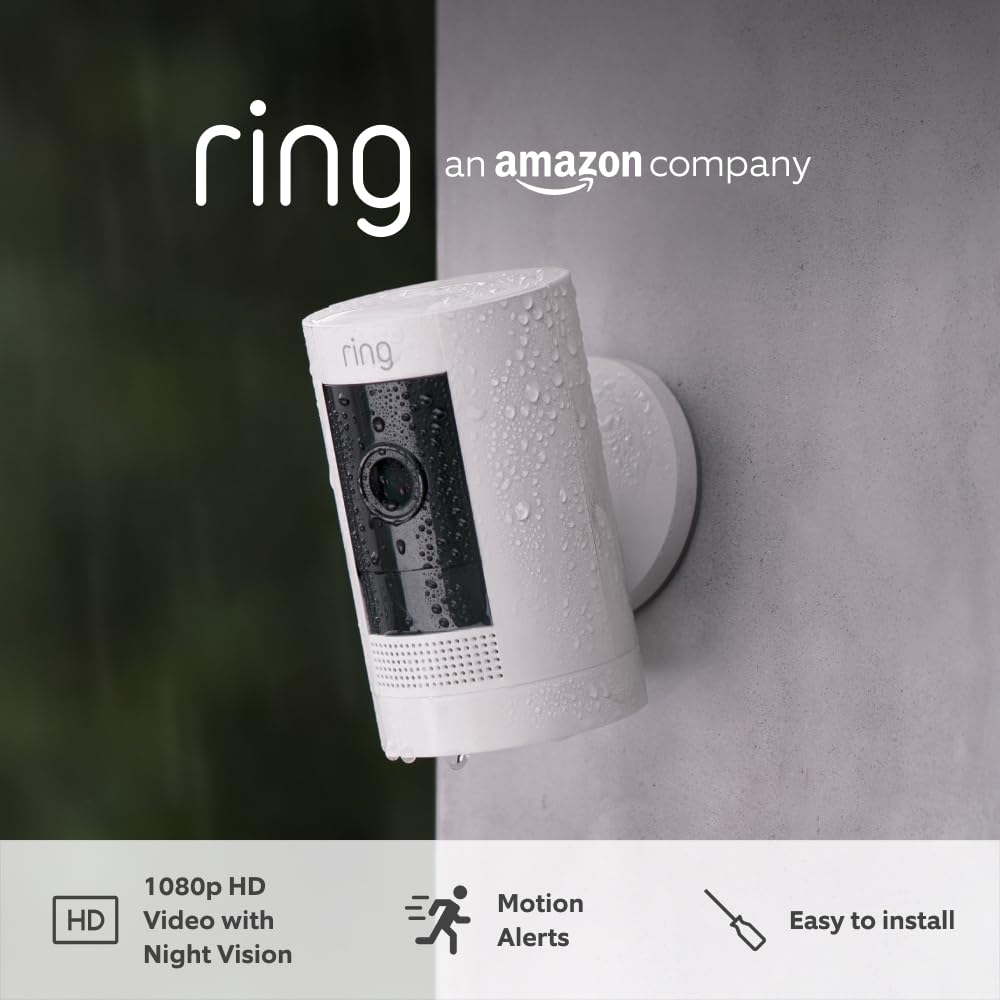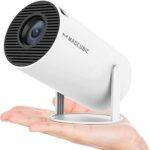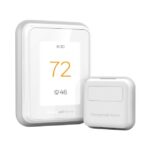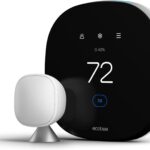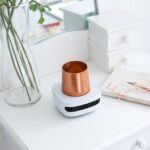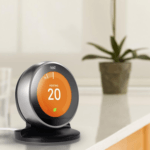If you’re looking for ways to make your home easier (and a bit cooler) to manage, smart voice assistants and hubs offer a pretty sweet solution. These gadgets let you control lights, music, climate, and even your security systems by just speaking up. I’ve been using them to make everything from my morning routine to movie nights way more seamless, and I think they’re worth a closer look for anyone curious about smart home tech.
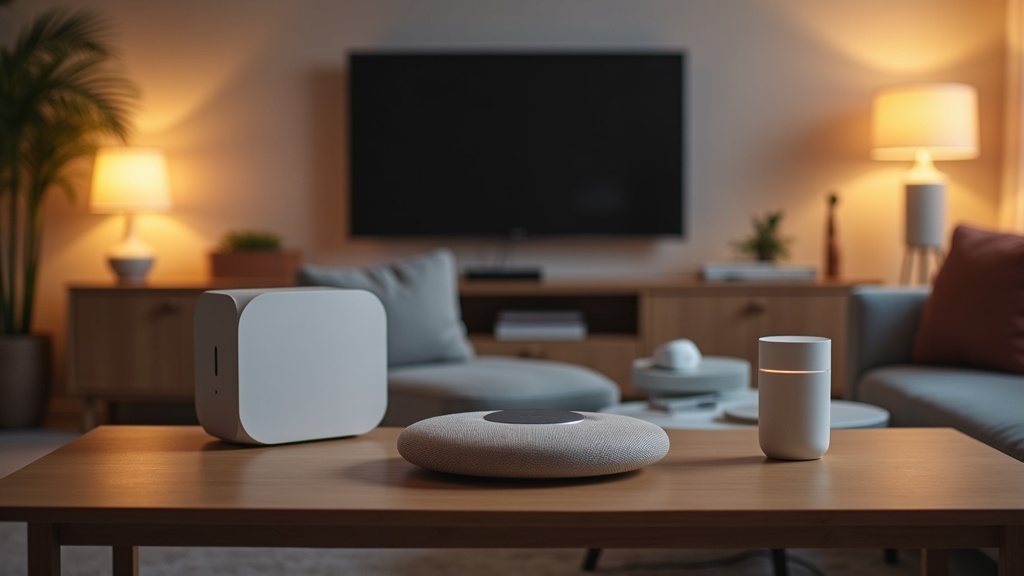
What Are Smart Voice Assistants & Hubs?
Smart voice assistants are those handy software helpers found in devices like Amazon Echo (Alexa), Google Nest (Google Assistant), and Apple HomePod (Siri). You talk to them, and they’ll play music, turn your lights on or off, answer trivia, or help manage your calendar. These assistants keep getting smarter with new features arriving frequently. They’re not just about convenience; they can help everyone, from kids to seniors, interact with technology in a simple and intuitive way.
Smart hubs serve as the command center. Think of them as bridges connecting together smart gadgets across your home, so everything works together smoothly. Some hubs are standalone devices like Samsung’s SmartThings Hub, while others are built right into voice assistants. When you combine both, you’ll easily control a bunch of smart home gadgets, even if they’re from different brands. The right hub can give a serious boost to your home’s connectivity and flexibility.
Why Use Smart Voice Assistants and Hubs?
- Easy & Hands-Free: No need to fumble for switches or your phone. Just say what you want, and it happens, freeing up your hands for other tasks.
- All-in-One Control: Connect and command everything from one spot. Lights, locks, music, and more are all in your reach with a single statement.
- Automate Routines: Set up daily routines like waking up or winding down. Things happen automatically, so you don’t have to think about it every time. This is especially helpful for busy families.
- Access Anywhere: With connected apps, you can manage your home from miles away or just from the couch. This remote access means you stay in control, wherever you are.
- Personalized Info: Get daily news, reminders, and updates tailored for you. Super useful for keeping things on track, managing your schedule, and never missing appointments.
On top of these core benefits, smart assistants can help save energy by turning off devices you’re not using. The safety aspect is another key advantage—get alerts if something’s amiss, like a door left unlocked or a water leak detected.
Different Types of Smart Voice Devices
The smart home world isn’t a one size fits all. There are a number of options that you can integrate into your smart home:
- Smart Speakers: These include Amazon Echo, Google Nest Home, and Apple HomePod. They’re perfect for voice commands, music, reminders, and quick questions. Some options offer bigger sound for music lovers, while others focus on compact design for small spaces.
- Smart Displays: Devices like the Echo Show or Google Nest Hub have screens, so you can get recipes, see the weather, make video calls, or check your cameras. They add a visual layer to your assistant, making interactions richer and more informative.
- Smart Hubs: Samsung SmartThings Hub, Hubitat Elevation, and others are the tools that let lots of gadgets from different brands work together nicely. Hubs can even help bridge older tech with new smart features.
- Wearables & Portable Speakers: Smaller options like smart displays for kids’ rooms or outdoors, plus devices you can carry throughout the house—handy for controlling zones all over the house, or bringing music outdoors during a barbecue.
Getting Started: Choosing the Right Voice Assistant or Hub
All the choices can feel a bit overwhelming. Here are some things I look for before making a pick:
- Compatibility: I stick with a system (like Alexa, Google Assistant, or Apple HomeKit) that matches the gadgets I already have. Mixing and matching can work, but it gets a bit tricky with different brands—sometimes you need extra apps or accessories.
- Works With Your Devices: Not all assistants support everything. Double check compatibility with your bulbs, locks, or thermostats before you buy. This ensures your setup runs smooth.
- Features: Do you want video calls, a screen, or just audio? Multi room audio and intercom features are handy in bigger spaces, and some assistants now support voice recognition for multiple users.
- Budget: There are entry level speakers out there under $50, but high end displays or hubs can jump up in price. I try to match what I need with what I’m willing to spend, planning for future expansion if possible.
- Privacy: Strong microphone controls and clear privacy settings help if you’re privacy conscious. Each system puts out details, so it’s worth checking how they handle data.
Personal preference can also play a role. Do you prefer talking to Siri because you’re already deep into the Apple universe? Or maybe Google Assistant’s smart home integration fits your lifestyle better. Listening to reviews and asking people who already use different assistants can help you make a smart choice.
Quick-Start Guide to Smart Voice Assistants and Hubs
- Pick Your Ecosystem: Choose Alexa, Google, or Apple based on your phone and current devices. This step is crucial—starting with the right system can save hassle later.
- Set Up Your Device: Most speakers and displays are plug and play. Open their app and follow the steps, and you’ll be ready within minutes.
- Connect Gadgets: Pair your lights, plugs, thermostats, and more. Apps usually provide walkthroughs, making the process smooth even for beginners.
- Create Routines: Set up things like “Good Morning” to turn on lights, start the news, and adjust the temp in one shot. These automations really show the value of smart homes.
- Keep Things Updated: Regularly check for firmware and app updates for security and new features, so your setup stays protected and gains functionality over time.
It helps to tinker slowly at first—add one or two devices, test, and expand as you get more comfortable. This lets you avoid getting overwhelmed and figure out what truly improves your routine.
Things to Keep in Mind Before Investing
Smart voice assistants make life easier, but there are a few details to watch for:
- Wi-Fi Strength: Smart homes work only as well as your WiFi. Multiple devices can slow things down, so a mesh network can help if you have a bigger place with lots of connected gear.
- Privacy & Security: Smart speakers are always listening for a wake word. Look up how to mute mics, wipe recordings, and secure your devices. Reading up on privacy policies is also important to protect your personal information.
- Upgrade Cycles: Just like smartphones, these gadgets get updates every couple of years. If you like the latest features, plan for the occasional upgrade. Sometimes, new features arrive via software updates, but hardware limitations may kick in after several years.
- Voice Accuracy: If you speak with an accent or have a noisy house, some assistants pick up commands better than others. Before buying, check in with friends or check customer reviews that mention these points.
Wi-Fi Strength
I’ve learned the hard way that spotty WiFi means missed voice commands and offline devices. A simple fix is to move your router, or if you have a larger space, it might be worth getting a mesh system for better signal throughout the house. If you plan on adding lots of smart devices, consider upgrading your internet plan to keep up.
Privacy & Security
Sometimes I use the mute button on my speaker when I want quiet or extra privacy. Also, it’s a good idea to check privacy settings in the app, delete old voice recordings, and set up two factor authentication for your accounts. Changing device names and keeping passwords strong can also make a difference.
Compatibility Hassles
Not all smart gadgets work with every hub. Sometimes, switching brands can mean setting up new apps or routines. I’ve found sticking with a main brand avoids a lot of frustration down the road. If you really want to switch things up and add multiple brands, consider hubs known for broader compatibility.
Pro Tips for Getting More Out of Smart Assistants
I’ve picked up a few tricks for making smart voice assistants a lot more useful to integrate into your smart home:
- Group Devices by Room: Set up rooms or zones in your app, so “Turn off all the lights in the living room” works instantly. This is especially helpful as your smart device collection grows.
- Try Custom Routines: Automated tasks like saying “I’m leaving” can shut off lights, lock doors, and dial down the thermostat with one command. Setting these up saves time and mental energy.
- Integrate Security: Connect cameras or sensors for alerts and live feeds through your hub or display, adding another layer of safety to your home.
- Smart Entertainment: Use voice commands for multi room audio, or link your TV for super easy streaming control. It’s handy for parties, movie nights, or just relaxing music after work.
I love starting a playlist with just my voice while cooking. It’s those simple things that make smart homes so enjoyable and can give a little burst of motivation for daily routines.
Also, don’t be afraid to experiment with additional devices that can add to your setup, like smart thermostats, robot vacuums, or garden sensors. These expand what you can do with voice commands and let you customize your environment even more.
Everyday Examples & Real-Life Uses
- Morning Routines: I wake up to my favorite playlist, the curtains opening, and the thermostat warming things up before I even get out of bed.
- Safety Checks: Locking the door or checking who’s at the front door using just my voice or a quick look at the smart display for peace of mind.
- Chill Nights: Dimming the lights, turning on “Do Not Disturb,” and starting a movie, all with a few words. Perfect for movie nights or winding down with a book.
- Remote Control: On vacation, I like checking cameras and turning lights on or off so it looks like someone’s home. It’s a convenient way to keep your space secure when away.
Another example: setting reminders for medication or appointments, which makes smart assistants a great fit for older adults looking for independence. Even kids can join in, asking for homework help or weather updates before school.
Frequently Asked Questions About Smart Voice Assistants and Hubs
Q: Can I use Apple, Amazon, and Google assistants in the same house?
A: Yes, but it’s smoother if you stick mostly to one system. If you mix, keep assistants in different rooms to avoid confusion. Mixing may also limit the features you can use across all devices, so weigh the pros and cons.
Q: Will these work if my internet is down?
A: Some basic functions like turning on lights might work locally, but most voice commands, streaming, and routines need the internet running, so plan for occasional hiccups.
Q: Is it possible to keep my conversations private?
A: Yes, just check privacy settings regularly, mute your device when you want, and manage your voice history in the app. Practicing good digital habits helps protect your privacy.
Q: Do I need a hub for smart devices?
A: Some smart gadgets (especially WiFI bulbs and plugs) work without a hub, but a hub can help connect devices from different brands and simplify your setup over time.
Start Creating a Smarter Home
With so many smart devices available, making your home hands free is more doable than ever. Whether you want smoother mornings, easier ways to manage home security, or some fun with voice controlled music and entertainment, there’s a smart assistant and hub that’ll fit the job. Keep things simple at first, and expand as you get more comfortable. Your future self will definitely thank you for making life a little easier, more efficient, and a touch more next level cool.
👉 Check out my favorite picks for smart voice assistants and hubs, and track down the best current deals to level up your home today.
